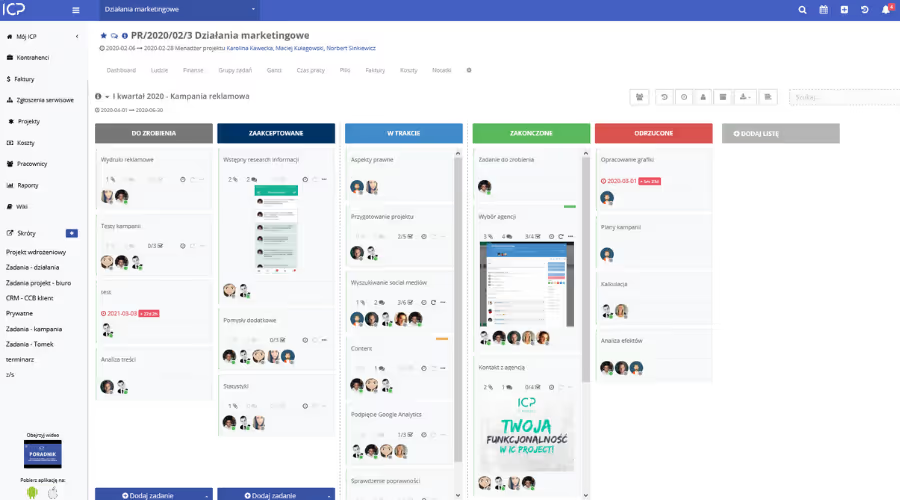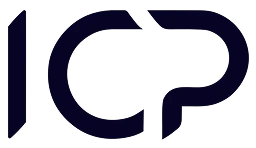Best project management glossary in 2022
The project management glossary needs to be systematized to ensure as high the repeatability of executed projects as possible.

Tell our team about your needs and we will customize the tool as part of your chosen package!
The project management glossary needs to be systematized to ensure as high the repeatability of executed projects as possible. Project methodologies streamline work through the breakdown of big undertakings into smaller units that are easier to control and complete as well as ordering them on the timeline to meet project management expectations. Implementation of a methodology well suited to the specifics of the enterprise and projects run by it requires, however, great knowledge and familiarity with terms applied to describe them. This article compiles the most important of them.
Glossary - the most important terms in project management
Project
A project is a unique undertaking leading to the creation of a unique product. Therefore, it differs from repeatability-oriented production and services. Depending on the adopted methodology, it can be broken down into smaller one-off or cyclic tasks.
SMART features
SMART features are the acronym Specific, Measurable, Achievable, Relevant, and Time-bound. That's what a well-formulated project objective should be characterized with.

Kickoff meeting
The participants of the kickoff meeting (starting meeting inaugurating the project) are the team members and the client. Its purpose is to collect key information - targets, assumptions, deadlines, budget, etc. - regarding the order. Its essential elements include discussion and building a positive and encouraging atmosphere.
Roadmap
The roadmap is another term to describe a schedule, plan, or scheme of actions oriented at the accomplishment of the given goal. It is usually employed in strategic planning at the high organizational level and is dedicated to long-term activities.
Feasibility study
The feasibility study is an analysis and assessment of the project's potential. Its purpose is the objective identification and strengths and weaknesses of assumptions as well as related opportunities or threats. It comprises the determination of resources required to complete the project as well as its chance for success.
Critical path
The critical path is a series of specific activities - a delay in any of them results in an extension of product completion. It is the longest possible series of tasks ordered chronologically where the next one can be started only after the previous one is completed.
Project manager
The project manager is the person responsible for the accomplishment of its goals. The project manager is responsible for planning, coordination of tasks, and project closing and, therefore, he or she has to be active at all stages of work.
Scoping
Scoring is a procedure involving the determination of the scope of the entire project or its part. In certain situations, it may be required by the law, e.g. in the scope of assessment of project environmental impact.
Gantt chart
The Gantt chart is a graph used in management. It is based on project breakdown into tasks and time planning. To improve transparency, the tasks may be marked with different symbols.

Milestone
A milestone is an event in the project schedule that summarises the set of tasks or a phrase (e.g. supplying the beta version to the client). Its occurrence may entail the need or option to decide on the further form of the project.
Spaghetti plot
The spaghetti plot is used in lean methodologies to visualize in-house product paths at the early product or production stage. It facilitates tracing weaknesses generating losses due to wrong allocation and extension of transport or decision paths.
Burn down chart
The burn-down chart is used in Agile methodologies, e.g. Scrum. It is used to visualize work remaining to be done over time, enabling the determination of trends and timeliness control.
Kanban board
The Kanban board may have a physical or digital form. "Post-it notes" are attached to it, symbolizing the specific tasks - each with its performer, assumptions, and deadline assigned. Traditionally, it is divided into three categories: "to do", "in progress" and "completed", and changing the status of the given task means moving it.

Poka-yoke
Poka-yoke (in Japanese poka – a mistake, yokeru – proofing) is a mitigation method for the risk of defects and accidents resulting from mistakes. It assumes that mistakes are the fault of processes, not people.
Muda, Mura, Muri
Muda (waste), Mura (unevenness), and Muri (overburden) are three types of losses occurring - and requiring elimination - in Lean methodologies. Their identification and implementation of optimization solutions is a necessary step in enterprise development.
Risk register
The risk register is one of the documents used in the PRINCE 2 method. It contains information on threats, their analysis, countermeasures, and status. It is updated by the manager at almost any project stage and influences the planning of further tasks to be performed by the team.
Parkinson's law
Parkinson's law was formulated in 1955. It is the adage that "work expands to fill the time available for its completion". At first, it was used for public administration, but it also applies to project management. One of its implications is the fact that an employee who is given a specific amount of time to complete a task will complete it as late as possible.
Deadline
The deadline is the final due time for the completion of a task or entire project. Exceeding usually entails negative consequences provided for in the contract of employment or order. The deadline is also the milestone point.
What else should you know about project management?
The above glossary is not an exhaustive list of terms you may encounter when studying project methodologies. Although they do share certain elements, such as the very notion of the project, its beginning, tasks, etc., each of these methodologies uses its own specific set of terms. What does not make it easier is the fact that the number of methodologies, their variants, and combinations is difficult to estimate. For this reason, individual broadening of project management glossary knowledge and search for information is crucial.
Also read

How to create an effective project plan?
A project plan is a key element of every successful project. Without a proper plan, projects can become chaotic and difficult to manage.
Try IC Project in your company Our team is ready to help!

Create a free account and test with no obligation




